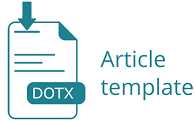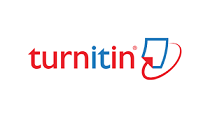URGENSI PENGATURAN JAMINAN KREDIT DALAM SEKTOR PEER TO PEER (P2P) LENDING DI INDONESIA
Abstract
This articles aims to analyse and examine the importance of implementing credit guarantee on peer to peer (p2p) lending mechanism in Indonesia as a form of prevention of Non Perfroming Loan Risk and the ideal type of credit guarantee to be applied on peer to per (p2p) lending mechanism. This research is a normative legal research with a perspective character with a consepual approach. The type of data used is secondary data which includes primary dan secondary legal materials. Meanwhile, the thechnique of collecting data in examining these problems use a literature study technique which is then carried out by technical analysis using the deductive method. The results show that there is urgency for the application of credit guarantee on peer to peer (p2p) lending sector based on 3 important aspects, namely philosophical, juridical, and sociological foundations. The urgency is related to the risk of non performing loan or default by the borrower which must be borne by the the lender. Implementing fiduciary security into peer to peer (p2p) lending mechanism can be an ideal solution to provide protection and legal certainty for lenders while minimizing the potentional risk of non performing loan.
Keywords
Full Text:
PDFReferences
Buku:
Ishaq. 2009. Dasar-Dasar Ilmu Hukum. Jakarta : Sinar Grafika.
M. Bahsan. 2007. Hukum Jaminan dan Jaminan Kredit Perbankan Indonesia.Jakarta : PT Raja Grafindo.
Moh.Kusnardi dan Harmaily Ibrahim. 1983. Pengantar Hukum Tata Negara Indonesia. Jakarta : CV Sinar Bakti. Cetakan Kelima.
Jurnal:
Alexander Bachmann dkk. 2011. “Online Peer-to-Peer Lending”. Journal of Internet Banking and Commerce. August 2011, Volume 16. Nomor 2, Lunerburg, Jerman : Bagian Manajemen dan Kewirausahaan Universitas Leuphana.
Alistair Milne dan Paul Parboteeah. 2016. “The Business Models and Economics of Peer-to-Peer Lending”. European Credit Research Intitute. Nomor 17, Brussels, Eropa : Bagian Perbankan European Credit Research Institute (ECRI).
Dongyu Chen dan Chaodong Han. 2012. “A Comparative Study of Online P2P Lending in the USA and China”. Journal of Internet Banking and Commerce.. Volume 17 Nomor 2, Cina : Bagian Manajemen Universitas Fuzhou Cina.
Immanuel Adhitya Wulanta Chrismantianto. 2017. “Jurnal Analisis SWOT Implementasi Teknologi Finansial Terhadap Kualitas Layanan Perbankan di Indonesia”. Jurnal Ekonomi dan Bisnis. Volume 20 Nomor 1, Salatiga : Fakultas Ekonomika dan Bisnis Universitas Kristen Satya Wacana
Lerong Lu. 2018. “Promoting SME Finance in the Context of the Fintech Revolution: A Case Study of the UK's Practice and Regulation”. Banking and Finance Law Review. Volume 33 Nomor 3, Inggris : Bagian Ilmu Sosial dan Hukum Universitas Bristol.
Martina Pokorna dan Miroslav Sponer. 2016. “Social Lending and Its Risk”. Procedia – Social and Behavioral Sciences. Volume 220, Belanda : Bagian Informasi dan Analitika Elsevier.
Sitompul, Meline Gerarita. 2018. “Urgensi Legalitas Financial Technology (Fintech): Peer to Peer (P2P) Lending di Indonesia”. Jurnal Yuridis UNAJA. Volume 1 Nomor 2, Jambi : Bagian Hukum Keperdataan Universitas Adiwangsa Jambi.
Trisandini Prasastinah Usanti, Anindya Prastiwi Setiawati, Ninis Nugraheni. 2019. “The Legal Principle of Collateral in Fintech Lending”. Hang Tuah Law Journal. Volume 3 Issue 2, Surabaya : Bagian Hukum Keperdataan Fakultas Hukum Universitas Hang Tuah.
Windy Sonya Novita dan Moch Najib Imanullah. 2020. “Aspek Hukum Peer to Peer Lending (Identifikasi Permasalahan Hukum dan Mekanisme Penyelesaian)”. Jurnal Private Law. Volume 8 Nomor 1, Surakarta : Bagian Keperdataan Fakultas Hukum Universitas Sebelas Maret Surakarta.
Internet:
Corporate Finance Intitute. What is Peer-to-Peer (P2P) Lending?.https://corporatefinanceinstitute.com/resources/knowledge/finance/peer-to- peer-lending/. Diakses pada 9 Desember 2020 Pukul 11:58 WIB.
Kusnandar, Viva Budy. 2019. “Penduduk Dewasa Indonesia yang Belum Tersentuh Layanan Finansial Terbanyak di ASEAN”. https://databoks.katadata.co.id/datapublish/2019/10/09/penduduk-dewasa- indonesia-yang-belum-tersentuh-layanan-finansial-terbanyak-di-asean. Diakses pada 26 Desember 2020, pukul 09:02 WIB.
Liputan6.com, 2019. “Jerat Pinjaman Online, Utang Rp1,5 Juta jadi Rp30 Juta”. https://www.liputan6.com/news/read/4046645/jerat-pinjaman-online-utang-rp-15-juta-jadi-rp-30-juta. Diakses pada 16 Februari 2021 Pukul 13.27 WIB.
Otoritas Jasa Keuangan 2020. “Perkembangan Peer to peer (p2p) lending Periode Agustus 2020”. https://www.ojk.go.id/id/kanal/iknb/data-dan- statistik/fintech/Pages/-Statistik-Fintech-Lending-Periode-Agustus-2020.aspx. Diakses pada 6 Oktober 2020 Pukul 20.13 WIB.
Strategi Keuangan Nasional Inklusif. 2018. POKJA 1 : Edukasi Keuangan. https://snki.go.id/pilar-1-edukasi-keuangan/. Diakses pada 26 Desember 2020 Pukul 10:52 WIB.
Refbacks
- There are currently no refbacks.














